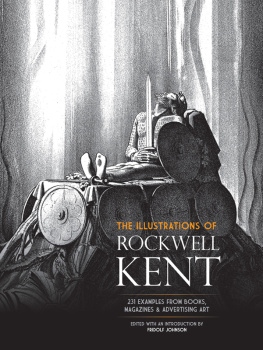Rockwell Stephens - Axes & chainsaws: use and maintenance
Here you can read online Rockwell Stephens - Axes & chainsaws: use and maintenance full text of the book (entire story) in english for free. Download pdf and epub, get meaning, cover and reviews about this ebook. year: 1979, publisher: Storey Publishing, LLC, genre: Children. Description of the work, (preface) as well as reviews are available. Best literature library LitArk.com created for fans of good reading and offers a wide selection of genres:
Romance novel
Science fiction
Adventure
Detective
Science
History
Home and family
Prose
Art
Politics
Computer
Non-fiction
Religion
Business
Children
Humor
Choose a favorite category and find really read worthwhile books. Enjoy immersion in the world of imagination, feel the emotions of the characters or learn something new for yourself, make an fascinating discovery.

- Book:Axes & chainsaws: use and maintenance
- Author:
- Publisher:Storey Publishing, LLC
- Genre:
- Year:1979
- Rating:3 / 5
- Favourites:Add to favourites
- Your mark:
- 60
- 1
- 2
- 3
- 4
- 5
Axes & chainsaws: use and maintenance: summary, description and annotation
We offer to read an annotation, description, summary or preface (depends on what the author of the book "Axes & chainsaws: use and maintenance" wrote himself). If you haven't found the necessary information about the book — write in the comments, we will try to find it.
Axes & chainsaws: use and maintenance — read online for free the complete book (whole text) full work
Below is the text of the book, divided by pages. System saving the place of the last page read, allows you to conveniently read the book "Axes & chainsaws: use and maintenance" online for free, without having to search again every time where you left off. Put a bookmark, and you can go to the page where you finished reading at any time.
Font size:
Interval:
Bookmark:
Use & Maintenance
by Rockwell Stephens
Its a funny thing about axes. Lots of folks have an axe or two around the place. Sometimes they might be what you could call working axes, for a man who gets out his own firewood or splits his own kindling, but they may be just odd tools that dont have any regular job to do. Either way, they sometimes can give you a pretty good clue to what the owner knows about an axe and possibly even what kind of person he may be.
If the blade has a good shape to it and the poll isnt all battered over from being used and abused as a sledge hammer, and the handle isnt all splintered up under the head and maybe wrapped with tire tape to hold it togetherchances are the owner may be a pretty good axe man. At least he shows some respect for a good tool. And if it turns out that he really knows how to use it and keep it sharp, he more likely than not will agree with you that swinging an axe is a satisfyingyou might say even pleasurablekind of occupation. There is a skill to it, to be sure, but unless an axe is set up right, just banding away at a piece of wood can be a pretty dreary business.
It should be natural, in a way, to respect an axe and take care of it, for the axe must be the oldest tool in the hand of man. When he discovered, a million years or so ago, that he could fasten a sharp-edged stone to a handle of sorts, he was really on his way. Perhaps this is why axe and knife may have a deeper relationship to man than any other of his tools. They became, in fact, essential to survival. The saw, by comparison, is a modern invention. Given a good axe, the pioneer could make a life in the wilderness, fell his trees, build his cabin, warm his hearth, and clear the fields to sow and reap.
It took a while for todays axe to find its shape, and this is evident in any collection of old tools. Even these came a long way from the Stone Age. It was not until the early 1700s that there developed a reasonable resemblance to the present style. By that time early explorers and traders were bringing trade axes to exchange for the Indians furs. These had a tomahawk shape and lacked a poll, the flat surface suitable for pounding at the opposite end of the head from the cutting edge or bit. By Revolutionary times the American pioneer had developed a shape better suited to clearing the forests, and his felling axe had a heavy poll and a stronger blade, which made it a far more efficient tool.
Single Bits

Double Bits

The blacksmith, of course, was the only axe maker, and he brought amazing skill to his work. A strip of iron, formed to the shape of the head, was folded in half over a form which preserved the shape of the eye to take a handle. Into the open end of the fold he inserted a wedge of steel to form the cutting edge or bit.
This was then hammer-welded, an operation requiring sure knowledge of the precise temperatures required to shape and temper the head, and a sure hand with a hammer.
These early felling axes filled the pioneers basic needs, but another type appeared as they sought a more effective tool to shape the beams and timbers for house and barn. This was the broad axe, made for the primary purpose of transforming a round log into a square post or beam. It had a wide blade, perhaps twice the size of a felling axe, and a heavy headtoo heavy to swing as a felling axe but ideal for its basic purpose. Early types had a chisel edge, but later styles adopted the V edge of the felling axe.
The broad axe has disappeared from the scene, but I was once fortunate enough to see an old timer hew a ten-inch log into a square beam at a lumberjack roundup in Vermont. His first step was to mark out a squarethe size of the beamon the end of the log. Then with a chalked cord stretched tight from end to end he snapped a chalk line the length of the log, which had been stripped to the underbark to show the line clearly.
The next step made a series of deep vertical cuts along the side of the log, each to the depth indicated by the chalk line. He did this with a long-handled felling axe that had only a slightly cured edge. He stood sideways on top of the log, spacing the cuts with even measured swings about six inches apart. Then he stood alongside the log and, with downward slicing strokes, hewed to the line by chipping the scored side to a flat surface, moving backward along the face of the log and holding his axe with right hand forward to achieve a precise, even stroke.

The same operation was repeated to make a second flat side, after which the log was given a half turn to rest on one of the newly cut flat surfaces. Another snap of the chalk line marked the third face, cut the same way, and again the fourth, producing a foursquare beam accurate to less than a quarter of an inch. Little wonder that these old hand-hewn beams are so prized by the home-owner who wants a beamed ceiling.
Skilled as the old time blacksmiths were, todays axes must rank with the best of their work. Modern technology produces exactly the kind of steel the manufacturer wants, more uniform in quality and composition than when most blacksmiths had to make their own. And the critical operations involved in heat treatment and tempering now can be done under the most precise controls.
But even the best axe must have a little loving care. Born sharp as any cutting tool must be, it must stay sharp. A dull axe is a dangerous axe in addition to being one of the most ineffective of tools.
One of my shins still carries the trace of a teen-age scar when my axe glanced off the log I was chopping and bit me, instead of the wood. This must have impressed me more with the truth of that dull axe saying than anything else I was told about the care of an axe. I have never had a dull axe since.
But there is more than meets the eye in keeping an axe sharp. On a visit years ago to friends on a New Hampshire lake I undertook the assignment of cutting down a big hemlock whose branches, it was determined, were a menace to the cottage roof as well as an obstacle to the view from the front porch. They had a long-handled heavy old axe that seemed to have a good edge to it, but my chopping efforts produced pretty disappointing progress. I could put the blade where I wanted it to go, but got an undersized grade B chip out of the slowly widening notch I was trying to make.
How did the old time loggers knock out a chip the size of ones hand with every blow? I found the clue to this some time later in my own woodlot, and with it a better understanding of how an axe does its job.
I was splitting some two-foot maple logs for the fireplace one afternoon when an elderly neighbor came by. He was the caretaker of the adjacent property and had told me that he had done a lot of logging in his time.
We were discussing the chances of early snow as I swung my axe into a nice, clean looking billet. I had hit dead center, but my axe just stuck in the log and nothing constructive happened. I freed the blade after some effort and hit the log again. Same result. A little embarrassed at my performance, I was about to make a third try when he said let me see your axe, and I handed it to him.
You got that edge too thin, he said. Cant split wood with a razor. Front of your edge is sharp enough, gets into the wood all right, but its got no push to spread the cut. Nothing to make the wood split apart. Save this axe for some other job like limbing or sharpening fence posts and get yourself an axe with some cheek to it. Then dont sharpen the cheek all away like you did with this.
Font size:
Interval:
Bookmark:
Similar books «Axes & chainsaws: use and maintenance»
Look at similar books to Axes & chainsaws: use and maintenance. We have selected literature similar in name and meaning in the hope of providing readers with more options to find new, interesting, not yet read works.
Discussion, reviews of the book Axes & chainsaws: use and maintenance and just readers' own opinions. Leave your comments, write what you think about the work, its meaning or the main characters. Specify what exactly you liked and what you didn't like, and why you think so.











